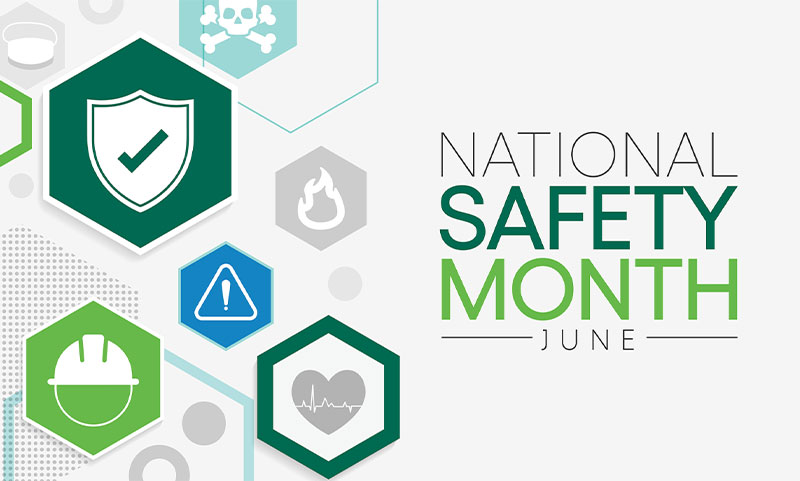June Is National Safety Month: Why Industrial Ventilation Matters for Factory Safety
June marks National Safety Month, a time to emphasize the importance of safety in the workplace. This, of course, includes the job site. Ensuring a safe environment includes personal protective equipment and safety procedures, but it also encompasses the very air workers breathe. In industrial facilities, where extreme heat and limited airflow can pose daily challenges, better ventilation is one of the most effective ways to improve worker safety. Effective industrial ventilation is a critical component in maintaining factory safety through improving air quality, regulating internal temperature, and safeguarding employee health.

The Crucial Role of Ventilation in Factory Safety
In addition to hard hats, safety goggles, and practicing safe operating procedures, safety is also about proper ventilation and air quality. I Industrial facilities often contend with challenges such as excessive heat, airborne contaminants, and inadequate airflow. Poor air circulation contributes to a range of issues, from heat stress and fatigue to long-term respiratory health problems. Implementing robust ventilation systems addresses these concerns by:
- Improving Air Quality: Efficient ventilation improves working conditions by introducing fresh air that drives hot, stale air out, reducing the risk of heat and moisture buildup.
- Regulating Temperature: Proper airflow helps maintain optimal temperatures, minimizing heat-related illnesses by reducing internal temperatures by as much as 30 degrees.
- Enhancing Overall Safety: A well-ventilated environment reduces the likelihood of accidents caused by heat-related worker distractions and promotes overall well-being.
Effective ventilation is critical in maintaining safe working conditions in industrial environments. From big buildings such as steel mills and foundries, to moderate sized manufacturing plants and warehouses, everyone needs to have temperate, breathable air. Properly designed systems, either natural, powered, or hybrid ventilation solutions, help to lower ambient temperatures by exhausting hot air that accumulates at ceiling level and drawing cooler fresh air in. Natural ventilation solutions, for example, use pressure and thermal differences to move air without mechanical input. These systems are particularly valuable in large spaces where traditional HVAC solutions may be impractical or inefficient.
In facilities where natural ventilation alone isn’t sufficient, hybrid systems that combine passive and powered elements can provide more controlled airflow. By tailoring ventilation design to a building’s structure and internal heat sources, facility managers can significantly improve air movement, thermal comfort, and worker safety, all while reducing long-term operational costs.
Moffitt’s Commitment to Safer Work Environments
Moffitt specializes in engineered ventilation systems designed specifically for large industrial spaces with heat-producing processes. Whether it’s steel mills, foundries, paper mills, manufacturing plants, or power generation facilities, our natural and hybrid systems help maintain safe indoor conditions by harnessing the principles of thermodynamics and aerodynamics to move air efficiently and effectively.
At the core of our work is a commitment to improving worker safety through smarter airflow. Excessive heat and poor air quality are more than just comfort issues. They’re leading causes of fatigue, heat stress, and long-term respiratory concerns in industrial environments. That’s why every Moffitt system is designed to meet performance and energy goals while supporting a healthier, safer environment for everyone on the plant floor.
We evaluate each facility’s unique challenges, from building layout and process heat loads to local climate conditions, to develop ventilation solutions that reduce indoor temperatures, remove airborne contaminants, and ensure a consistent supply of fresh air. Whether through natural exhaust systems like the MoffittVent, powered equipment like wall fans and evaporative cooling units, or hybrid approaches that combine both, our systems help mitigate risk and improve day-to-day working conditions.
Moffitt’s safety-first approach extends beyond system design. Our team provides on-site assessments, CFD thermal modeling, and turnkey installation services to ensure each solution performs as intended. Because, at the end of the day, better ventilation leads to safer facilities, and safer facilities lead to better outcomes for people and operations alike.
Ready to Improve Your Facility?
National Safety Month is the perfect time to evaluate your ventilation system. If your building feels hot, stuffy, or stagnant, it’s more than an inconvenience. It’s a potential hazard. Talk to Moffitt about how better airflow can mean better safety for everyone on your floor.
